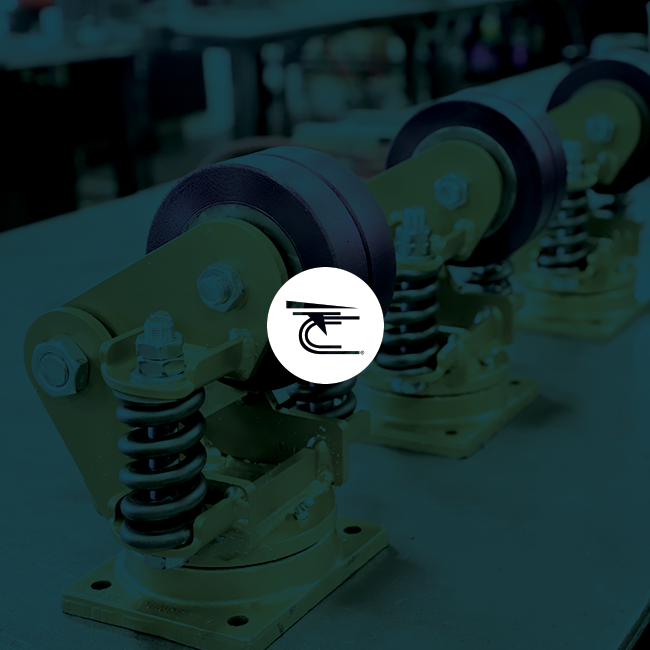

For generations, industrial caster construction has been ruled by a infallible monarch. Traditional kingpin swivel casters, for decades, have provided royal service to its subjects – handling large enough loads to complete most applications. But no king is without its challengers – and, as we’ll learn in this two-part series, kingpinless design offers a possibility of dethroning the once and mighty.
The traditional kingpin swivel caster is composed of several pieces: a top plate, a lower (thrust) race, a lower (thrust) bearing, an upper (load) race, an upper (load) bearing – and of course, the kingpin,. For the uninitiated, this pin is actually a bolt or rivet that joins the other five components together, allowing the caster to swivel. Lending additional strength and support to most industrial casters are legs which attach to the bottom side of the upper race; as well as a bearing mounted to the lower race.
This construction technique, albeit tried and true, does mean that a lot is demanded of the kingpin – and even the mighty sometimes fall. Because of its location and role as the joining element of the swivel section, the kingpin absorbs most of the force going through the heavy-duty caster. This constant barrage of force causes the kingpin to wear down over time.
Though modern kingpins are engineered to handle such forces well under proper use, two situations can hasten its failure:
Towing: Unless specifically designed with heavy-duty bearings, most traditional swivel casters will fail when being used for towing applications. That’s because such casters are not engineered for the type of high-speed cornering that a cart under tow is subjected to. Casters are generally rated for a top speed of 2 to 3 miles per hour, so being towed at 5 to 6 miles per hour and attempting to take a sudden turn will reduce the load bearing capacity quite significantly. This will lead to both shearing of the kindpin and deformation of the swivel section that can create both a risk of failure over time, or a catastrophic and immediate failure of the kingpin.
Shock Loading/Rough Terrain: Your heavy-duty swivel casters are at their best when sudden forces are minimized. Dropping a load onto a cart, or rolling it across a rough surface, will again reduce the life and effectiveness of the kingpin. This is because, generally speaking, the wheels and legs resist these forces and instead transmit them directly onto the kingpin. Over time and after many impacts, the kingpin will deform, and if the deformation is great enough, the swivel section will begin to seize because the ball bearings will become captured between the race and the plate. In more extreme cases, the swivel section will separate enough to allowing the ball bearings to escape.
Despite these challenges, traditional swivel casters still represent an economical and reasonable option for most industrial caster applications. In our next blog, we’ll look at the qualities of kingpinless swivel casters that make them a formidable option.
If you would like to learn more about our complete line of ergonomic casters, contact us anytime for immediate service. Design the exact caster for your needs on our Custom Configurator including the options you need, and download a 3D model.